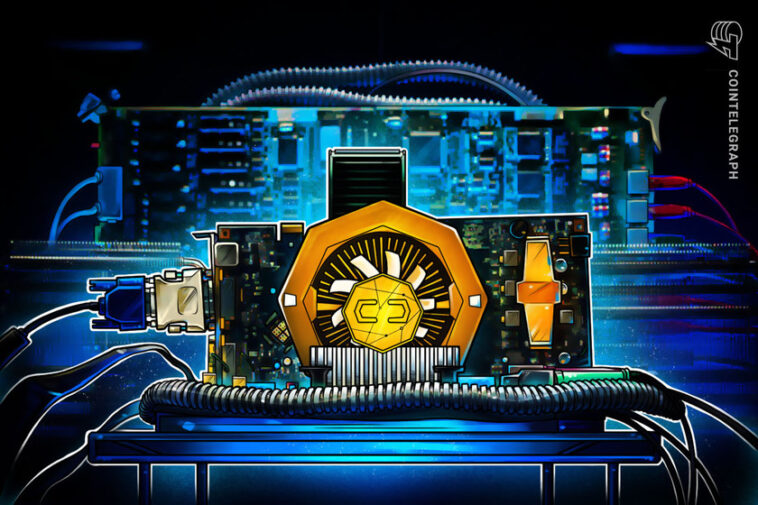The company expects a minimal contribution from its cryptocurrency mining processor sales going forward.
Nvidia beat the expectations by generating over $6.5 billion in revenue, but the chip manufacturer missed the target for its crypto-mining GPU line.
The California-based tech giant announced its financial results for its second fiscal quarter ended Aug. 1, 2021. Key highlights include $6.51 billion in revenue, 15% up from the first quarter, and $1.04 billion earnings, both largely bolstered by gaming, data center and professional visualization equipment sales.
With the addition of GeForce RTX 3080 Ti and RTX 3070 Ti, the gaming segment led the record growth with $3.06 billion in revenue and an 85% growth from last year. Nvidia’s data center business brought in $2.37 billion in revenue, while its professional visualization products earned $519 million.
Nvidia announced that the company is expecting $6.80 billion in revenue in the third fiscal quarter.
However, one key area fell short of expectations, the earnings call revealed. During the first-quarter earnings call, Nvidia CFO Colette Kress predicted a $400 million revenue for the company’s cryptocurrency mining processor (CMP) line for Q2. Nvidia saw $266 million in CMP sales in the second fiscal quarter, missing its target by a one-third gap. The CMP line was introduced in February and made $155 million in the first quarter.
Related: GPU price inflation dips slightly as Ether downtrend continues
Nvidia is having a hard time balancing the supply between hardcore gamers and crypto miners for its high-end graphics units. The company introduced hash rate limiters to its RTX 3060 series graphics cards to limit the crypto mining capabilities of the units.
At the end of May, Nvidia said it would be applying a reduced Ethereum hash rate to its newly manufactured GeForce RTX 3080, RTX 3070 and RTX 3060 Ti graphics cards. Coming with a “Lite Hash Rate” label, new cards are strictly aimed to meet the demand from gamers rather as opposed to crypto miners.
Explaining that the company’s recent efforts to limit the hash rate of gaming graphics cards aim to ensure enough chip supply for gamers, Kress said the company expects a “minimal contribution” from its crypto-related sales from now on.





 BTC-USD
BTC-USD  ETH-USD
ETH-USD  LTC-USD
LTC-USD  XRP-USD
XRP-USD